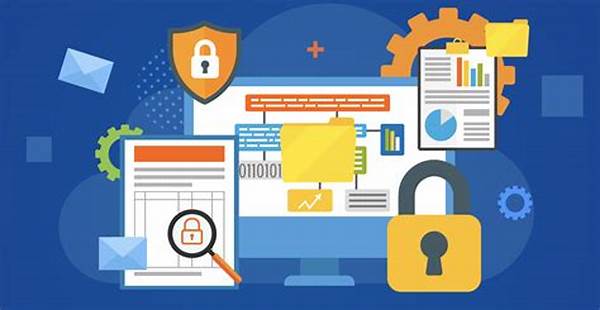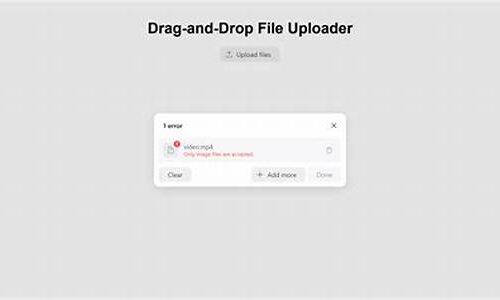Hey there, digital wanderers! Today, we’re diving into the world of digital asset usage rights. Whether you’re a blogger, a business owner, or just someone who loves sharing online, understanding these rights is essential. Let’s unravel this digital tapestry together and ensure you’re equipped with the knowledge to navigate the expansive landscape of digital assets.
Read Now : Downloadable Game Art Backgrounds Free
Understanding Digital Asset Usage Rights
Digital asset usage rights can sound a bit intimidating, but don’t worry! It’s basically about knowing what you can and can’t do with digital content like images, videos, music, and so forth. Think of it as the road signs we need when traveling down the digital highway. Without understanding these rights, you risk taking a wrong turn, which could lead to legal headaches—or worse! Imagine curating a beautiful blog post, only to find out the image you used could land you in hot water because you didn’t have the right to use it. Bummer, right?
So, what falls under digital asset usage rights? Basically, it covers the permissions you need to use, share, or modify digital content. It’s like the rulebook that prevents anyone from inadvertently stepping on someone else’s toes. It involves understanding licenses—stock photos mean you’re typically good to go, but you’ve got to read the fine print. Then, there are royalty-free images, which are a godsend, but again, it’s crucial to check if attribution is needed and in what manner. In essence, mastering digital asset usage rights means you’re respecting the creators, protecting your own work, and ensuring smooth sailing in your digital endeavors.
Common Misunderstandings About Digital Asset Usage Rights
1. All Online Content is Free: Just because it’s online doesn’t mean it’s free to use. Always check the digital asset usage rights.
2. Royalty-Free Means Free: Royalty-free doesn’t mean cost-free! It means you’re free to use the asset in certain ways after you pay the license fee.
3. Attribution is Optional: Some digital asset usage rights require crediting the creator. So always double-check!
4. Purchased Assets are Yours to Own: Even if you buy a digital asset, often it’s just the rights to use—not to own outright.
5. Good Intentions Cover Legal Gaps: While good intentions are nice, they don’t substitute proper adherence to digital asset usage rights.
Licensing Types Within Digital Asset Usage Rights
Digital asset usage rights include various licensing types like Creative Commons, Public Domain, and Commercial Licenses. Creative Commons licenses, for instance, allow creators to give people the right to use their work under certain conditions. You might have seen those nifty little icons that indicate what you can and can’t do—like using a photograph for a non-commercial project or remixing an original work as long as you give credit. Meanwhile, assets labeled under Public Domain are generally free to use without restriction. Yay for those! But, usually, they’re older works or explicitly given this status by their creators. As for commercial licenses, businesses often use these for corporate branding—it ensures they can legally use certain images or themes without a hitch.
Having a clear grasp of these licensing types within digital asset usage rights helps avoid potential legal issues and establishes a respectful relationship with the content creators. Plus, it empowers you with the freedom to create and improvise without second-guessing the legitimacy of your actions. Simply put, understanding digital asset usage rights isn’t just about compliance, but also about enhancing creativity while respecting the boundaries and contributions of others in this digital ecosystem.
Practical Tips for Navigating Digital Asset Usage Rights
1. Read Licenses Carefully: Never skip the fine print. Understanding the specific terms of digital asset usage rights means fewer hiccups.
2. Utilize Reputable Sources: Use services like Shutterstock or Adobe Stock, where terms are clearly stated, for your digital asset needs.
3. When in Doubt, Ask: If you’re unsure about the digital asset usage rights, reach out to the creator for clarification.
4. Keep Records: Document licenses and permissions for all digital assets you use. It’ll be handy if questions arise later.
5. Educate Your Team: If you’re in a business setting, ensure everyone understands digital asset usage rights to prevent accidental misuse.
Read Now : Free Game Engine Options
6. Leverage Resources: Dive into platforms like Creative Commons that make understanding digital asset usage rights easier.
7. Stay Updated: Digital laws and rights can evolve. Keep up with changes to remain compliant.
8. Avoid Risky Downloads: Steer clear of dubious websites offering “free” assets that might infringe on digital asset usage rights.
9. Opt for Clear Agreements: When commissioning digital assets, ensure all terms are explicitly outlined regarding usage rights.
10. Respect Attribution Requirements: Always credit a creator when it’s required, ensuring your usage of their digital asset adheres to pre-set conditions.
Exploring the Business Side of Digital Asset Usage Rights
For businesses, digital asset usage rights are a crucial element that can influence branding, marketing, and day-to-day operations. Companies rely on digital content to craft their narratives and present a cohesive brand identity, making it important that they’re utilizing these assets lawfully. Unauthorized use of images or music, for instance, can quickly escalate into brand-damaging scandals—not to mention significant monetary penalties. By understanding and implementing the correct digital asset usage rights, businesses not only avoid these blunders but also contribute to a sustainable digital ecosystem where creators are duly recognized and compensated for their work.
Having clear policies and a knowledgeable team ensures that the process of acquiring and using digital assets is seamless. It creates a synergy between creativity and legality, where everyone from designers to marketers understands their role in upholding digital asset usage rights. Start-ups and small businesses, in particular, stand to benefit from this understanding as it minimizes the risk of legal issues that could impact their growth. Ultimately, prioritizing these rights within a business framework is not merely a legal obligation but a strategic approach to ensure long-term success and brand integrity in the digital age.
Why Everyone Should Care About Digital Asset Usage Rights
From casual bloggers to corporate giants, digital asset usage rights matter to everyone who interacts with digital content. These rights establish the rules for fair play in the digital world. Imagine a world where you could freely use anything online without any constraints. Sounds tempting, but it would flood creatives out of the market. Those photos, videos, and audio assets that make our content pop are someone’s hard work. Understanding digital asset usage rights is about respecting that effort while ensuring we all play nice in sharing this amazing digital playground.
By caring about digital asset usage rights, you’re actively championing the boundary between creative freedom and respect for intellectual property. It’s about celebrating originality and fair compensation, which in turn fosters a more vibrant and ethically grounded online community. Whether you’re writing a blog, designing a website, or composing a new tune, these rights offer both protection and opportunities to explore. So next time you’re ready to click “download” or “upload,” take a moment to consider the digital asset usage rights at play—your knowledge keeps the wheels of creativity turning smoothly for all.
Summary of Digital Asset Usage Rights
Digital asset usage rights may seem like a complex web of regulations and terms, but understanding them plays a vital role in our digital interactions. These rights safeguard creators and users by establishing a framework for the lawful use of digital materials, such as images, videos, and music. By comprehending these rights, we not only prevent legal woes but also promote an equitable and thriving creative industry. Whether you’re grabbing stock images for a blog or remixing a song for a video project, being informed about digital asset usage rights ensures that your creative endeavors are both lawful and considerate of others’ intellectual property.
As we sail through the digital age, the importance of respecting digital asset usage rights cannot be overstated. They empower creators by reinforcing the value of their work and provide users with the freedom to explore and innovate within the boundaries of the law. By maintaining this balance, we contribute to a dynamic, respectful, and diverse digital environment that encourages new ideas and collective growth. So, whether you’re a seasoned pro or a curious newbie, remembering to prioritize these rights is key to enjoying and enriching the digital landscape responsibly.




